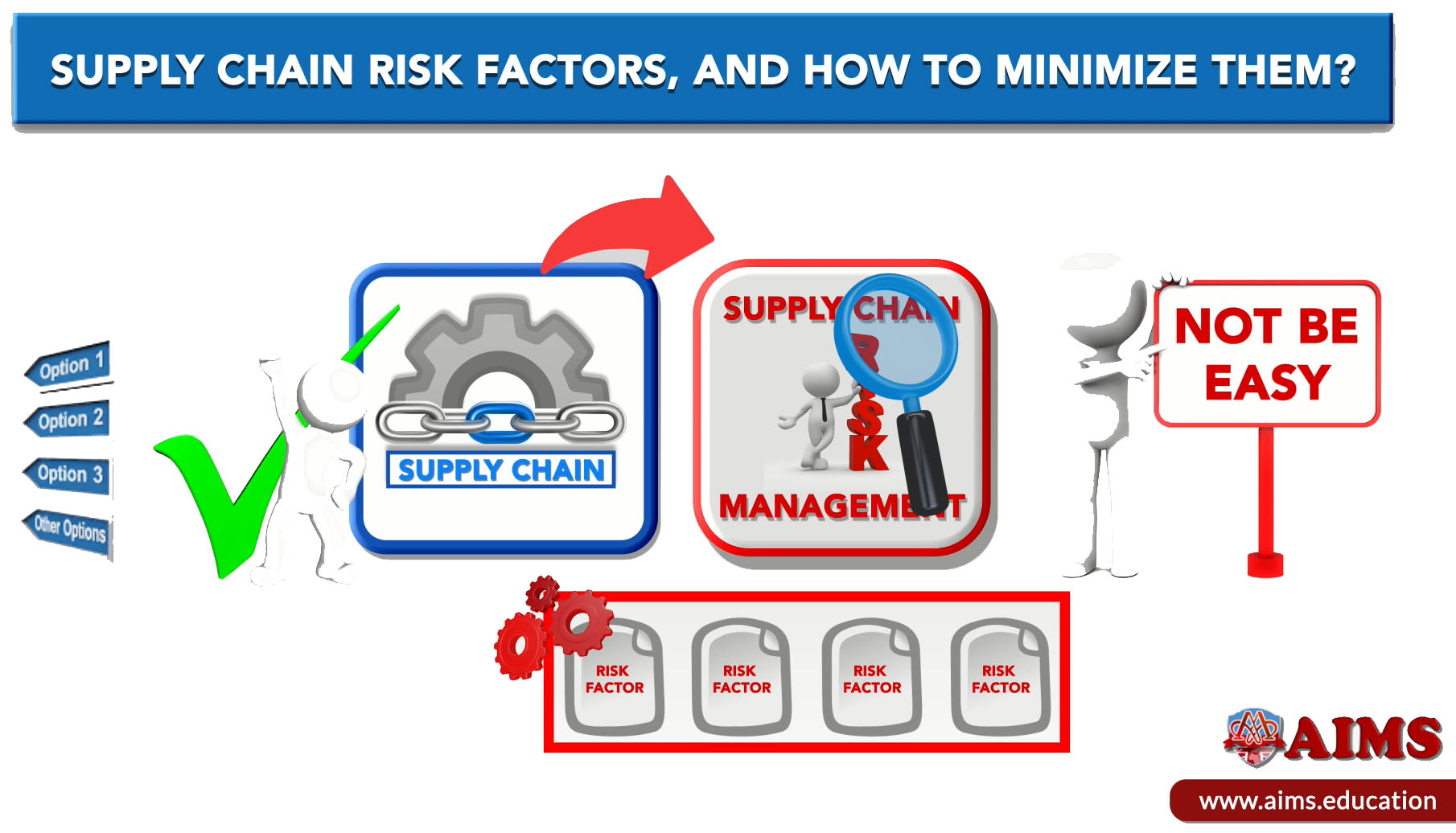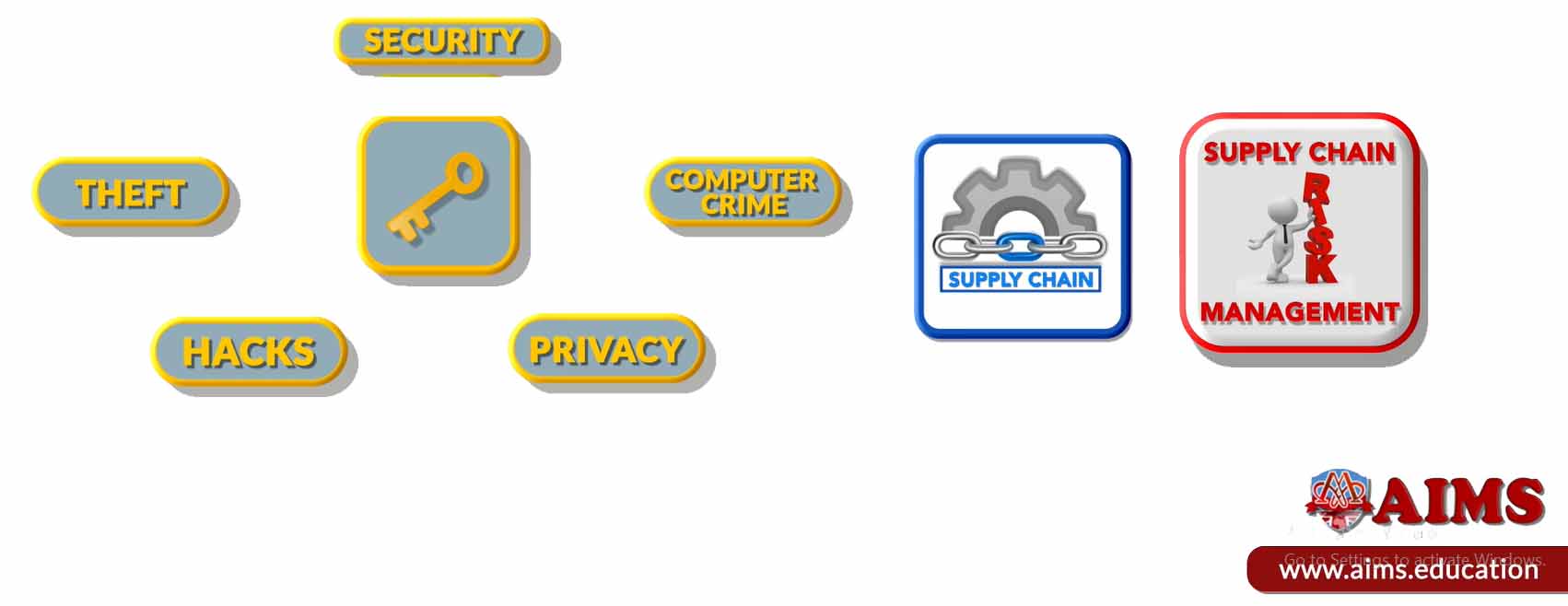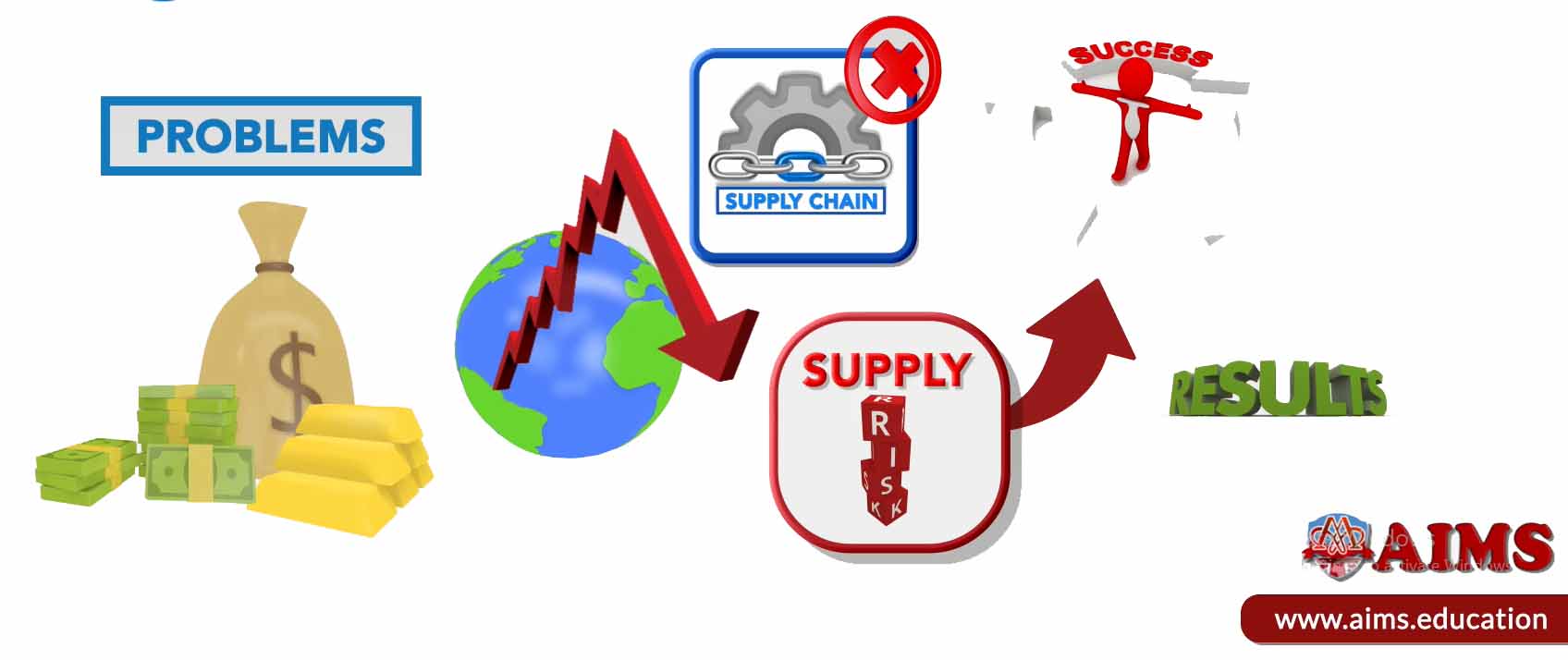What is Supply Chain Risk Management?
If you manage a supply chain, you need to do everything possible to obtain the very best supply chain risk management (SCRM) options at your disposal. Supply chain risk management is a process of identifying and minimizing the impacts of supply chain risks so businesses can ensure that their supply chain operations can operate smoothly and efficiently. It will not be easy, and this is why you have to first do a supply chain risk assessment and analysis, then identify the supply chain risk factors, and finally deal with them to the best of your capabilities.
7 Key Supply Chain Risk Factors & Solutions
There are many types of supply chain risks that businesses can encounter. They include theft, damage, disruptions from natural disasters, etc. By mitigating the supply chain risks, businesses can efficiently run and manage their supply chain operations. Let us review the seven key supply chain risk management factors and actions should be taken to mitigate those risks. Before going forward, if you want to understand more about supply chain management, refer to the lecture What is Supply Chain Management (SCM) and How It Works?
1. National or Local Regulations
As you can imagine, this type of supply chain risk is not under your control. Despite that, it can influence you quite a bit, which is exactly why you need to consult the regulations very often. The last thing you want to do regarding supply chain risk management process is to go over some laws. So, try to keep that in mind as it’s very important and it can make a whole lot of a difference.
2. Raw Material Prices and Labor Concerns
Every supply chain focuses on a certain raw material price. If that price goes up, you can face some major issues. When you do supply chain risk management you have to focus on raw materials. Labor problems as a supply chain risk management factor can appear at all times for any supplier, so it’s crucial to deal with them to the best of your capabilities as fast as possible. It will not be easy to do that right from the start, but with the right approach, you will see that nothing is impossible. However, in such situations, strategic supply chain management is helpful to minimize risks.
3. General Economic Conditions
Economic problems will affect a country’s stability and thus supply chains will be affected. This is one of the supply risks you have to tackle early on if you want to reach the very best success and results.
4. Security Breaches
Security problems like hacks and privacy concerns, theft, or computer crime are quite common. These can also affect the supply chain. This is why you have to focus on doing supply chain risk management process if you want to get the very best results and the utmost experience.
5. Currency Problems
Currency problems can also be seen as a supply chain risk management factor, especially since they tend to appear very often when a certain currency is fluctuating. Unfortunately, this is one of the risks that you have no control over.
6. A Lower Demand of Products
Obviously, if the demand is low, you will see that the supply chain will also be affected by this type of problem as well. It’s a very good idea to focus on studying the market at all times to avoid any potential losses at all times.
7. Business Interruption
Many factors can cause business interruptions, starting with terrorist attacks, war, conflicts, and natural disasters, among many others. Most of the time, these issues can’t be controlled or dealt with, so each company must find a proper way to eliminate the problem.

Supply Chain Risk Management Process
Supply Chain Risk Management process is designed to maintain efficiency in supply chains. Here are some key steps process for managing risks in supply chains:
Step 1. Risk Identification and Assessment
Identifying potential risks and assessing their impact and likelihood is the foundational step. In this step, you are required to map the entire supply chain and identify vulnerabilities and critical dependencies.
Step 2. Diversification of Suppliers
Relying on a single supplier can be risky. It would be best if you diversify your sourcing from multiple suppliers, as supply chain businesses can mitigate risks associated with supplier failure or disruptions.
Step 3. Inventory Buffering
Maintaining buffer inventory or safety stock can protect against supply chain risk for disruptions. You should provide a cushion that allows supply chain management operations to continue smoothly in the face of delays or shortages.
Step 4. Supplier Relationship Management
Building strong relationships with suppliers can lead to better communication and collaboration. This fosters more timely and effective responses to potential supply chain risks.
Step 5. Use of Technology and Data Analytics
Using advanced technologies is among the best supply chain management practices. You should implement technologies such as IoT, AI, robotics, and data analytics for real-time visibility into the supply chain, allowing for quicker identification of issues and proactive supply chain risk management process.
Step 6. Regular Audits and Compliance Checks
Conducting regular audits and ensuring compliance with supply chain industry standards and regulations can help you early detection of risks and maintain overall supply chain integrity.
Step 7. Business Continuity Planning
Developing comprehensive business continuity plans, such as action plans for various risky scenarios, ensures that companies are prepared to respond swiftly and effectively to any risk.

Supply Chain Risk Analysis and Assessment
The supply chain risk assessment and analysis is a process of analyzing and evaluating the potential supply chain risks. Let us see how the supply chain risk analysis works:
1. Identify Sources of Risk
One of the most important aspects of supply chain risk analysis is identifying the sources of risk. This includes identifying problems and analyzing the reasons for them.
For Example
If there is a shortage of raw materials, you should identify why that happened and what actions should be taken to mitigate that risk.
2. Understand Each Component of Your Supply Chain
Another important aspect of the supply chain risk management process is understanding how each component of the supply chain works and responds. This includes how your suppliers perform, the design of the supply chain network, how does procurement work, the warehouse management system, and the distributor’s network.
Example
If one supplier has a problem with quality, it could lead to delays for other suppliers that rely on them. Ultimately, it will affect operations and marketing.
This lecture is a part of supply chain management courses and MBA supply chain management online programs, which AIMS offers through a self-paced interactive learning system!

Types of Supply Chain Risks
There are two main types of supply chain risk:
- Operational Risk, and,
- Financial Risk.
1. Operational Risk
These risks are associated with your day-to-day operations, including theft, product damage, and inventory issues.
2. Financial Risk
It refers to the risks associated with your finances, such as money owed to suppliers, cost of damages and returns, and unpaid liabilities.
Supply chain risk assessment involves reviewing your current processes and identifying any potential threats. You should take steps to mitigate those risks and reduce your overall costs.
Key Note!

Conslusion:
“As you can see, there are quite a lot of factors in supply chain risk management process that you have to keep in mind. All of these risk factors can be very demanding and they might have some disastrous consequences if you don’t eliminate them fast.”
<section aria-labelledby=”faq-title”>
<h3 id=”faq-title”><span style=”color: #ff9900;”>Frequently Asked Questions</span></h3>
<div class=”faq-item”>
<h4>Q1: What is supply chain risk management?</h4>
<p>It’s the process of identifying, assessing, and minimizing risks that could disrupt supply chain operations so flows remain stable and efficient.</p>
</div>
<div class=”faq-item”>
<h4>Q2: How does the supply chain risk management process typically start?</h4>
<p>Begin by mapping your end-to-end supply chain, identifying vulnerabilities, and rating each risk’s likelihood and impact to prioritize actions.</p>
</div>
<div class=”faq-item”>
<h4>Q3: What’s the difference between risk analysis and risk assessment?</h4>
<p>Analysis explores sources and scenarios in depth; assessment ranks risks by probability and impact to guide mitigation decisions.</p>
</div>
<div class=”faq-item”>
<h4>Q4: Which factors commonly increase supply chain risk?</h4>
<p>Regulatory shifts, raw material and labor costs, macroeconomics, cybersecurity breaches, currency volatility, weak demand, and major disruptions.</p>
</div>
<div class=”faq-item”>
<h4>Q5: How does supplier diversification reduce risk?</h4>
<p>It avoids single points of failure, improves agility, and speeds recovery when one partner faces quality, capacity, or logistics issues.</p>
</div>
<div class=”faq-item”>
<h4>Q6: When should I use inventory buffering?</h4>
<p>Use safety stock when lead times are volatile, demand is uncertain, or disruption exposure is high to protect service levels.</p>
</div>
<div class=”faq-item”>
<h4>Q7: How do technology and data analytics help?</h4>
<p>IoT, AI, robotics, and analytics provide real-time visibility, anomaly detection, predictions, and faster response across the supply chain.</p>
</div>
<div class=”faq-item”>
<h4>Q8: What are operational vs. financial risks?</h4>
<p>Operational risks affect daily execution (theft, damage, inventory errors). Financial risks involve costs, currency exposure, and liabilities.</p>
</div>
<div class=”faq-item”>
<h4>Q9: What goes into a supply chain business continuity plan?</h4>
<p>Clear roles, comms trees, alternate suppliers/routes, inventory and capacity contingencies, data recovery, and tested disruption playbooks.</p>
</div>
<div class=”faq-item”>
<h4>Q10: How do I run a practical risk assessment?</h4>
<p>Map processes, list risks, rate likelihood/impact, set early warnings, assign owners, and apply mitigations like dual sourcing and audits.</p>
</div>
</section>
